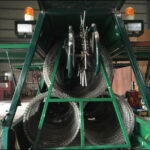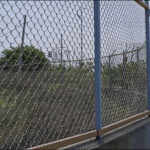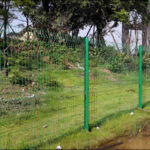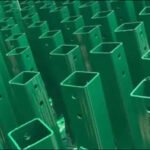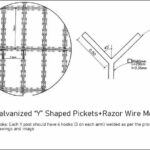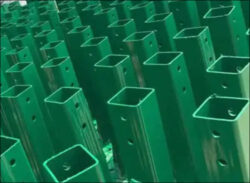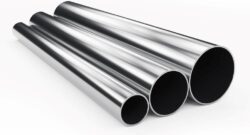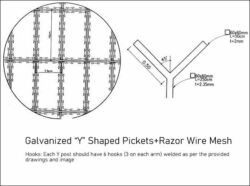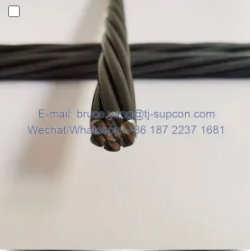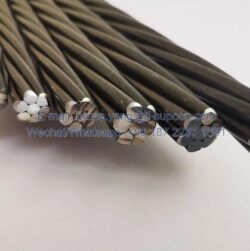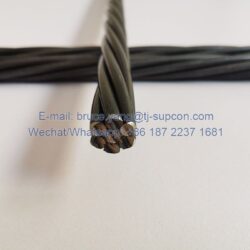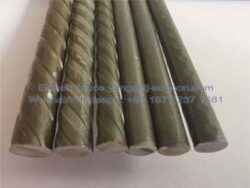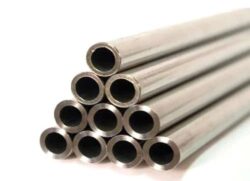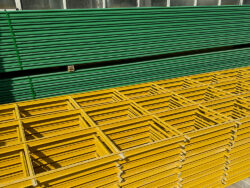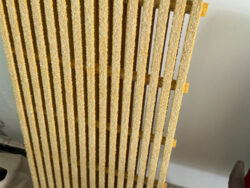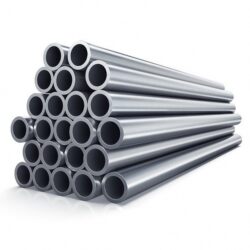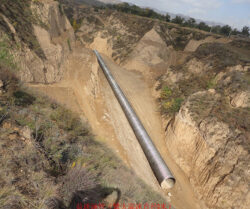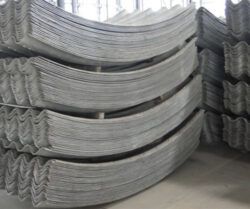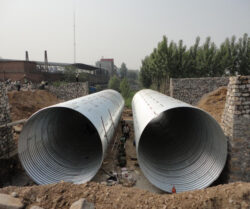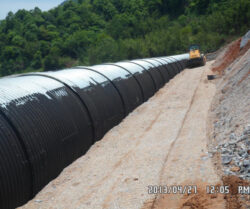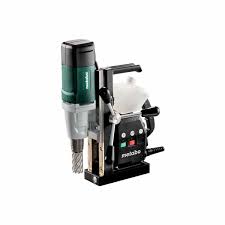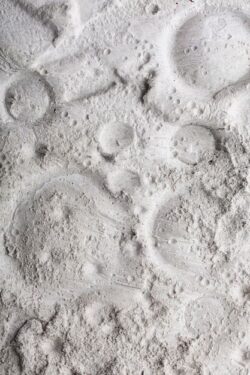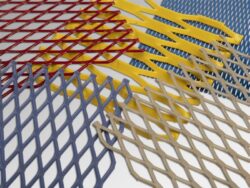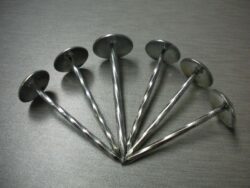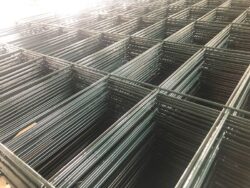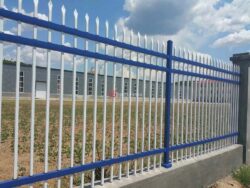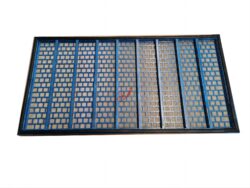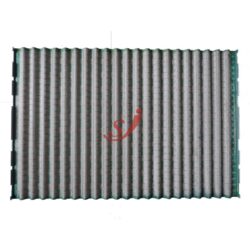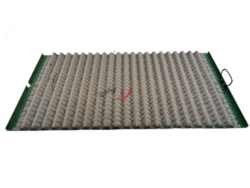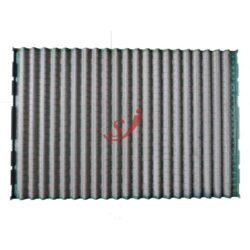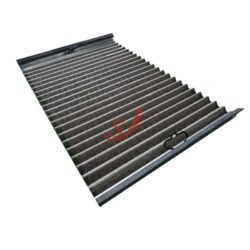Welded Wire Mesh Fence Products
This welded wire mesh fence system is designed to offer a durable, customizable solution for perimeter security. The materials used in its construction meet rigorous standards to ensure strength, stability, and long-lasting performance. The posts are made from high-quality materials that comply with ASTM specifications, while the welded wire fabric is reinforced with both galvanization and PVC coating for enhanced corrosion resistance. The fabric heights and panel sizes are flexible, allowing for customization based on specific project requirements. Below is a detailed breakdown of the materials used in the system.
- Posts: The posts for the fence must meet ASTM F1043 standards, with yield strength and section modulus that comply with or exceed ASTM F1083 pipe requirements. This ensures the posts have the necessary structural integrity to support the fence system.
- Welded Wire Fabric: The fabric is made from electronically welded low-carbon steel wire, forming the specified mesh pattern. The wire used is of ASTM A853, Grade AISI 1006, with a tensile strength of at least 70,000 PSI (485 MPa). After welding, the fabric is hot-dip galvanized with a zinc coating of at least 1.0 oz per square foot, followed by a PVC coating of 10 mils (0.25 mm). The PVC coating is applied in a continuous process, thermally fused to a primer on the galvanized wire, providing enhanced durability and corrosion resistance.
- Fabric Heights: Typical perimeter fences range in height from 8 to 16 feet, though custom heights can be specified. The fence panels are made in single panel construction, with standard panel dimensions of 5 feet by 2 feet in size and an 8-gauge wire thickness (125 mm × 51 mm × 4.11 mm). The panel width can range from 7 feet to 2 feet, and the height can be customized, with a common height specification of 2.75 meters.
Framework: Framework strength and coating must comply with ASTM F1043
- Grade A Pipe: Hot-dipped galvanized Schedule 40 (ASTM F1043 Group 1A).
- Grade B Pipe: Cold-rolled, radially frequency-welded steel (ASTM F1043 Group 1C, minimum yield strength 50,000 PSI [344 MPa]), coated per ASTM F1043.
- “C” Posts: Cold-formed (ASTM F1043 Group II, minimum yield strength 60,000 PSI [413.7 MPa]), size 3 ½” × 2 ½” × 0.130 wall (83 mm × 64 mm × 3.3 mm), must withstand 70 MPH wind load. Post sizes must meet approved practices; line, terminal, and gate posts must be at least 95% of nominal weight (ASTM F1043 Groups 1A, 1C, and II). Acceptable “C” post size: ¾” × 2 ½” × 0.160 wall. “C” line posts with flat attaching bars/brackets (15″ on center) are acceptable. 4″ diameter tubular posts are used as terminal posts (except for gate posts – Section 3.1-K).
- Rail Size: 1-5/8″ diameter (top and bottom of exercise yard fence); “C” rails (1.625″ × 1.25″ × 0.80″ wall) acceptable for top and bottom rails. Welded mesh secured to rails with 9-gauge tie wires (Section 2.1 G 5, 6, and 7).
Fittings and Accessories
- Post Tops: Pressed steel or malleable iron caps providing a weather-tight enclosure for tubular posts (not required for “C” posts). One cap per exposed tubular post end unless a combined post top/barbed wire arm provides equal protection.
- Preformed Power Twisted Ties: 9-gauge ties (aluminized with minimum 0.40 oz aluminum/ft² or galvanized) for fabric 10.5 gauge and larger.
- Tie Spacing: Top rails: maximum 24″ intervals; bottom rails: maximum 12″ intervals.
- Post Brackets Spacing for line and terminal posts: maximum 15″. Refer to drawings for bracket locations.
Under Construction
The installation of the welded wire mesh fence must adhere to specific guidelines to ensure a secure and stable structure. These include following ASTM F567 standards and the manufacturer’s recommendations for proper alignment and grading. Additionally, the site preparation plays a critical role in achieving a level and solid foundation for the fence. Key aspects include proper post hole diameters and excavation coordination with utilities, as well as ensuring that all posts and panels are aligned to accommodate minor adjustments for grade changes or workmanship variances. Below is a detailed breakdown of the installation requirements.
Installation
- Framework Installation: The installation of the framework must comply with ASTM F567 standards, along with the specifications provided by the manufacturer. Unlike other fence types, larger corner posts are not necessary for welded mesh installations, which simplifies the process.
- Welded Wire Fabric Installation: When installing the welded wire fabric, it is essential to follow the manufacturer’s recommendations closely. The installation must allow for a tolerance of 1 inch in misalignment between the top and bottom of the panel, as well as between posts and panels. This tolerance is important to accommodate minor grade changes, adjustments for out-of-square panels, occasional workmanship oversights, and slight misalignments of posts.
- Site Preparation: Before installation, the general contractor must perform all necessary grading and cleaning on both sides of the fence. The grading must ensure a straight, flat, and level surface, and any soil or stone fill should be thoroughly compacted. All excavation work must be coordinated with electrical and mechanical installations, and existing utilities should be identified before excavation begins.
- Post Hole Diameters: The post hole diameters are specified based on the size of the posts being installed. For posts of 2.375 feet (60 mm), a minimum hole diameter of 10.0 feet (254 mm) is required, while for larger posts such as 2.875 feet (73 mm), the hole diameter must be 12.0 feet (305 mm), and so on. These post hole dimensions are necessary to ensure secure post placement and stability for the fence. Refer to the specified table for additional post hole depth details.

